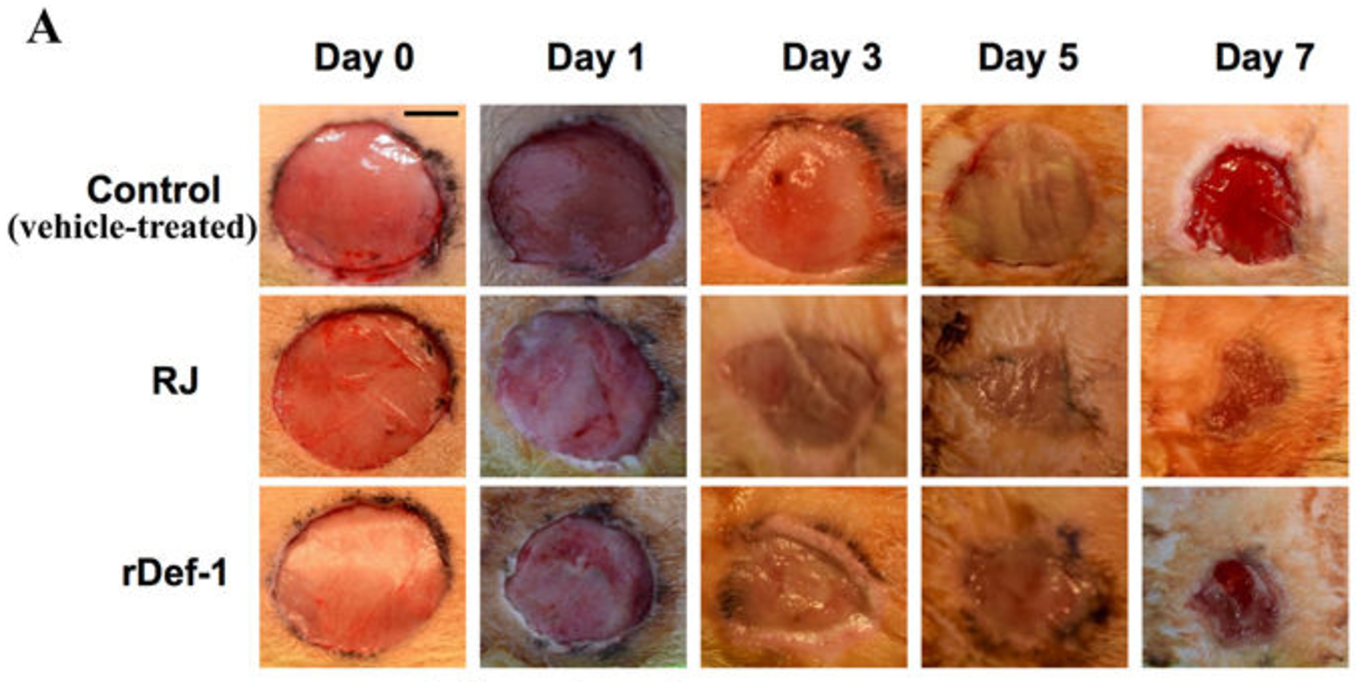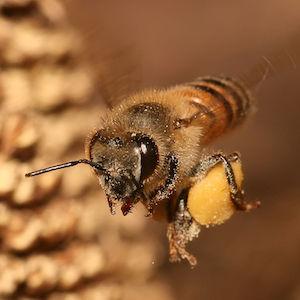Honey and other bee products have a life-giving, almost mystical quality according to alternative medicine practitioners and "back to nature" enthusiasts. In truth, they don't. Bee colonies aren't tiny pharmaceutical companies. Sure, honey tastes good, but from a chemistry standpoint, honey isn't all that different from high-fructose corn syrup.
That doesn't stop supplement makers from marketing all sorts of bee products as superfoods. Particularly popular ones are bee pollen and royal jelly, a secreted substance that worker bees feed to larvae. There is nothing magical about either of those. On the contrary, because bees are known to collect things like ragweed pollen, these products can trigger allergies, hives, or even anaphylactic shock.
Despite this risk, royal jelly traditionally has been used to aid wound healing. So a team of scientists from Italy and Slovakia determined why royal jelly has this property.
First, they separated royal jelly into various fractions in order to isolate the compounds that make it up. They tested the fractions on cells in vitro, and they discovered that some of the fractions had a strong ability to promote healing in cell cultures that had been mechanically scratched. The team scrutinized these fractions and identified the molecule responsible: a small protein (i.e., a peptide) called defensin-1.
After identifying the protein, the researchers cloned and expressed the gene responsible for encoding bee defensin-1. This allowed them to purify the defensin-1 peptide. Then, they compared the ability of royal jelly and pure defensin-1 to heal wounds on rats. (See below.)

As shown, compared to the control wounds (which only received a cellulose-based gel), both royal jelly (RJ) and defensin-1 (rDef-1) treatments facilitated healing. The authors, therefore, successfully demonstrated that defensin-1 is the active wound-healing component in royal jelly.
Despite this very interesting finding, slathering royal jelly on your cuts and scrapes is definitely not the takeaway lesson. Not only would rubbing potential allergens into an open wound be a terrible idea, but the concentration of defensin-1 in royal jelly is variable. However, the authors' discovery opens the possibility that this compound could be manufactured as a therapeutic agent.
Source: Marcela Bucekova, et al. "Bee-derived antibacterial peptide, defensin-1, promotes wound re-epithelialisation in vitro and in vivo." Scientific Reports 7, Article number: 7340. Published: 4-Aug-2017. doi: 10.1038/s41598-017-07494-0




